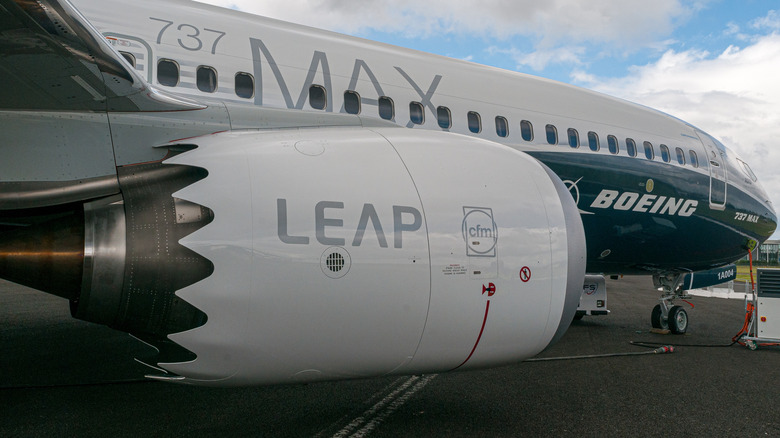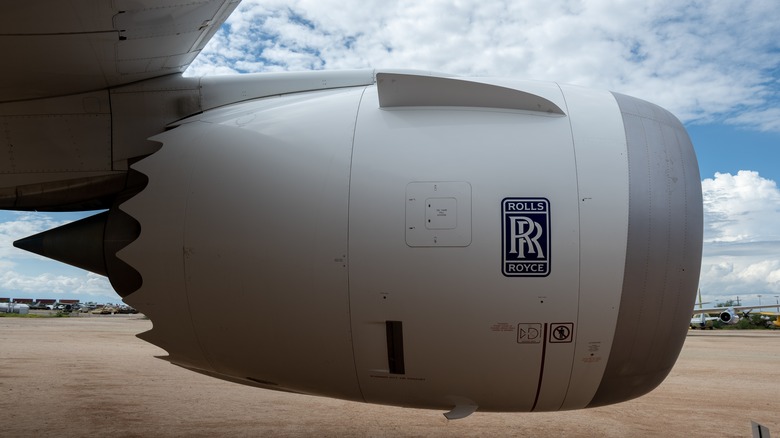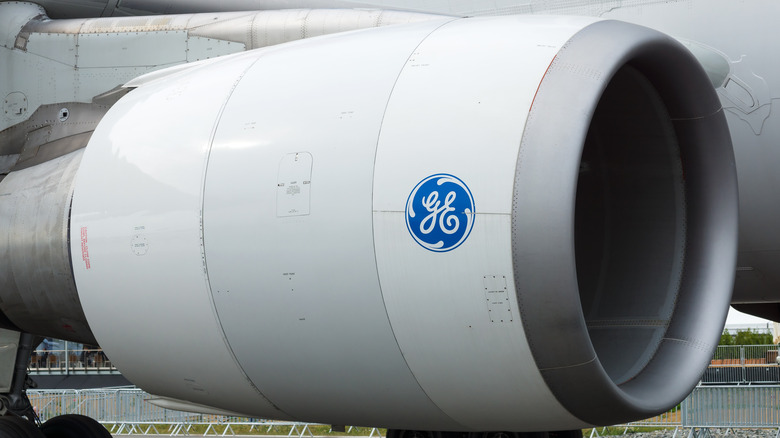Do Boeing And Airbus Use The Same Engines?
Despite Boeing's well-documented recent troubles, air travel is statistically still the safest form of travel. There are numerous reasons behind this, but one important factor is the reliability of the jet engines that power commercial jets across continents and oceans. The vast majority of these jets will be from Airbus or Boeing, which have a commercial jet market share of over 75% between them. From narrow-bodied planes like the Boeing 737 or Airbus A320, to behemoths like the Airbus A380 and Boeing 777, the two aerospace giants compete in every commercial aviation sector.
Despite both companies being direct competitors, they have sometimes used the same engines. For instance, if we look at the narrow-body models, both the Boeing 737 and Airbus A320 use variations of the CFM Leading Edge Aviation Propulsion (LEAP) engine, with Airbus using the LEAP-1A variant, and Boeing using the LEAP-1B variant. Interestingly, China's homegrown C919 narrow-body jet uses the "C" variant of the engine.
While these engines are of the same family, they technically aren't the same engines. However, the forerunner to this engine, the CFM56 (allegedly the best-selling aviation engine of all time), powered both the Airbus A320 and the Boeing 737. So, although there are instances where both manufacturers use the same engine, there are times when they don't. Let's take a closer look at the two manufacturers and the engines they use.
Pairing the right engines with the right planes
While some engines have been used on both Airbus and Boeing aircraft, many modern planes are designed around a specific powerplant or two. For example, Rolls-Royce designed and built the Trent 1000 engine exclusively for the Boeing 787 Dreamliner. However, the same plane can also be powered by the General Electric GEnx-1B engine. The latter engine can also be found on the Boeing 747-8. Another instance of shared engine duties is found on the massive Airbus A380. This plane offered two engine options: Airlines could opt for either the Rolls-Royce Trent 900 engine or the Engine Alliance GP7200 powerplant. (Engine Alliance is a partnership between General Electric and Pratt & Whitney.)
There are also other recent examples of engine manufacturers building an engine exclusively for a single plane. For instance, Rolls-Royce manufactures the Trent XWB exclusively for the Airbus A350. On the other side of the Atlantic, General Electric has developed the GE9X — the largest engine ever put on a plane — exclusively for use in the Boeing 777x program. Essentially, all this means that while Boeing and Airbus may share engine manufacturers, many of their modern aircraft have one or two engines that are exclusive to the manufacturer. However, this wasn't always the case historically.
Instances where Boeing and Airbus used the same engines
While modern designs call for specific engines for specific planes, there have been instances when Airbus and Boeing aircraft used the same jet engines. One engine that successfully bridged the gap between the manufacturers was the General Electric CF6 family. This was used across a range of models that included the Boeing 747 and 767, as well as the Airbus A300, A310, and A330. It's a similar story with the Pratt & Whitney PW4000‑94 engine; P&W built over 2,500 of these engines, and they powered a range of Airbus and Boeing models. This included the Airbus A300 and A310, while, on the Boeing side, it also powered the 747 and 767. As an interesting side note, both these engines also powered the McDonnell Douglas MD-11 passenger plane.
Of course, the aforementioned CFM56, which is the most popular jet engine ever, is the ultimate example of a shared engine. Over 33,000 of these engines were built, and they powered the Boeing 737 range of aircraft from 1987 right through to the 737NG, when Boeing replaced the CFM56 with the CFM LEAP-1B on the 737 Max. Variants of the same engine powered the Airbus A320 from its debut in 1987 until Airbus introduced the A320neo, which switched to the LEAP-1A engine. In short, the story of aircraft manufacturers and the engines they use shows some overlap, but also includes instances where manufacturers opt for tailored solutions instead.


